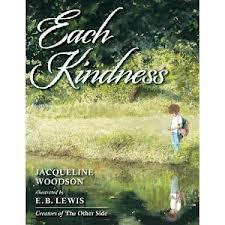The first workshop that I attended was Christine Holley's Ten Kinds of Small Group Work that Can Support Your Writing Workshop. Rather than list the small group ideas, I am going to list some of my favorite lines that she uses with students from her presentation. Christine's workshop was for K-2 teachers, but some of the strategies apply to older students, as well. So, here they come: these are a few of my favorite lines...
"Say a lot about it."
Christine uses this line after she has children plan their stories. She gets them to plan across pages, whether they are using pictures, words, or sentences. Then, their work becomes writing a lot about their plan.
"I'm going to put this away, but it gave me inspiration for my next book."
This is a line that she models for students to show them a way to think when it comes to re-doing a piece. Many times, students' writing has a clear "best" part and that part might want to appear in other works. Christine has blank booklets as part of her toolbox when she is meeting with students and she gives them out, not so that students copy their stories, but so that they know it's okay to move on, taking what they have learned as writers and applying it to their next piece. If they want to use a part from a previous work, that's okay and they can do that in a new book. Sometimes, this is an easier way for students to apply new learning.
"Whoops, this doesn't seem to work. Can I tear this apart and re-work it?"
Christine again uses this strategy with her own work, modeling for students that sometimes you can have a great middle, and an ending that doesn't seem to go. It's okay to remove the ending and try again to create a different one. It is also sometimes helpful for children to see their work laid out in front of them, without having to turn the pages.
"Your job is to label five words." (or six or seven or eight...)
Sometimes students like numbers. Some of her more hesitant writers have responded to a number in order to get them started.
"Does yours look like this?"
This is a line that Christine used during our workshop when she was talking about using mentor sentences. I loved the idea of a mentor sentence in a classroom to help students remember their capital letters and end punctuation marks. I can see it feeling so manageable to students as they begin to write sentences. This line could also work when students are learning about paragraphs and dialogue.
"Here are three booklets that are yours for the week."
While this strategy is not for all students, Christine has found that sometimes giving a finite and defined task to less productive writers gets them producing. Volume is important for young writers and Christine spent time talking to us about the importance of knowing WHY. Paper choice? Risk taking in spelling? Finding ideas? This line is for students who respond to defined tasks but they may still need teaching that addresses their other "whys".
"Are you doing this?"
This is a great line to get students to reflect on their writing and set goals for themselves. By using classroom charts or even smaller charts that travel with you to conferences and small group instruction, you can make your charts so purposeful for students!Christine Holley's word choices and lines made the hard work of learning to write so achievable for young children. Again, if you have the chance to come to New York in March or in future years, try to attend!





























